Birds are among the most fascinating creatures in the world, exuding beauty, grace, and elegance. However, these tiny creatures also endure nature’s wrath like any other animal on earth.
When a storm strikes, these feathered friends can be extremely tough as they face daunting food, shelter, and survival challenges. It is interesting to note the behavior and adaptations they show in such situations, which often go unnoticed.
Therefore, this article will delve into the topic of birds in a storm, highlighting their behavior, challenges, and how they cope with the turbulent situations they find themselves in.
1. Bald Eagle
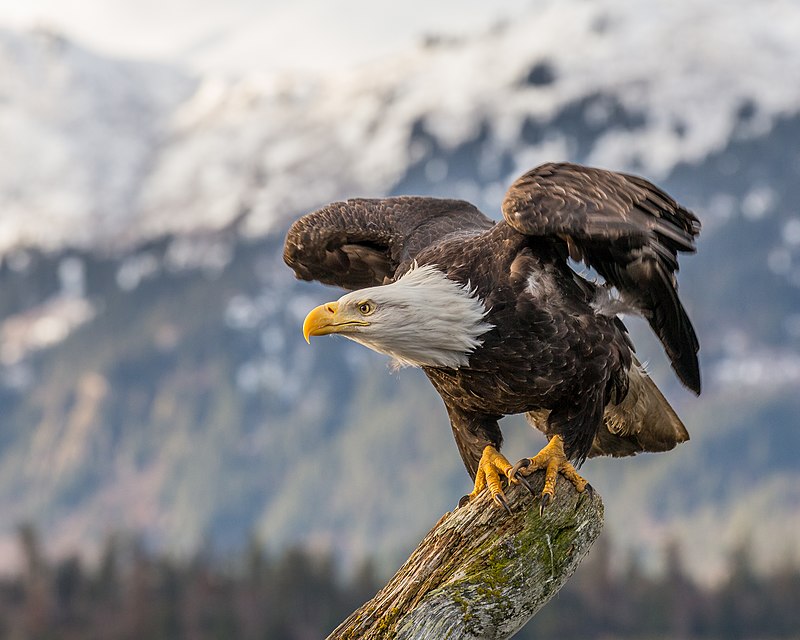
The majestic Bald Eagle is a bird of prey found in North America and recognized as the national symbol of the United States.
With its distinctive white head, brown body, and striking yellow beak, this sea eagle has two known subspecies that form a species pair with the White-tailed Eagle.
It inhabits much of Canada, Alaska, all states in the US, contiguous area, and Northern Mexico near large bodies of water where they feed mainly on fish.
These birds have an impressive wingspan ranging from 1.8 to 2 meters depending on their size, making them one of nature’s most magnificent creatures.
Scientific classification:
| Kingdom | Animalia |
| Phylum | Chordata |
| Class | Aves |
| Order | Accipitriformes |
| Family | Accipitridae |
| Genus | Haliaeetus |
| Species | H. leucocephalus |
Also Featured In: Most Common United States Birds, Birds That Live in Colorado
2. Petrels
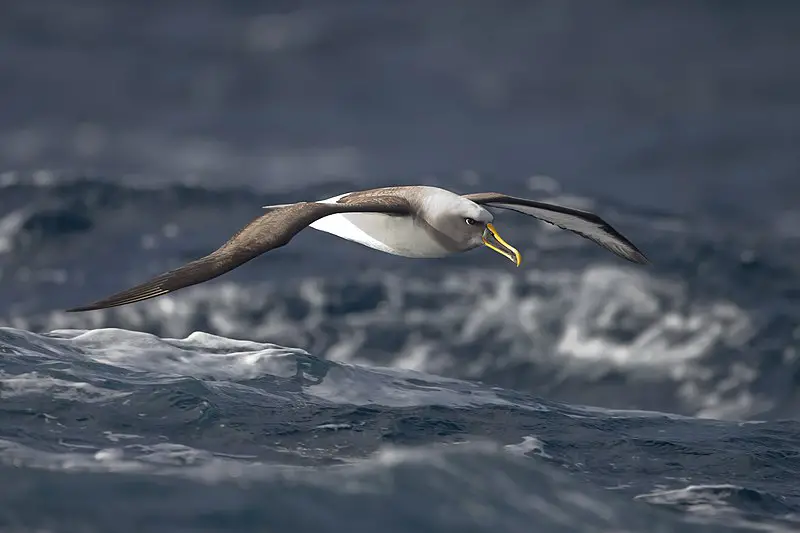
Petrels are seabirds that belong to the Procellariiformes order. They come from four families: albatrosses, petrels, and shearwaters, and two storm petrel families.
Commonly referred to collectively as ‘petrels’, these birds have a long history of being called Tubinares or tubenoses – referring to their distinctive beaks which feature small tubes on either side for them to detect food in dark seawater.
Petrels mainly consume fish, squid, and other small marine creatures but also feed off carrion when needed.
These waterbirds can fly great distances over open oceans in search of food with no land insight.
Scientific classification:
| Kingdom | Animalia |
| Phylum | Chordata |
| Class | Aves |
| Clade | Austrodyptornithes |
| Order | Procellariiformes Fürbringer, 1888 |
Also Featured In: Beautiful Brazilian Birds, Birds You’ll Find in the Sea
3. Northern Storm Petrels
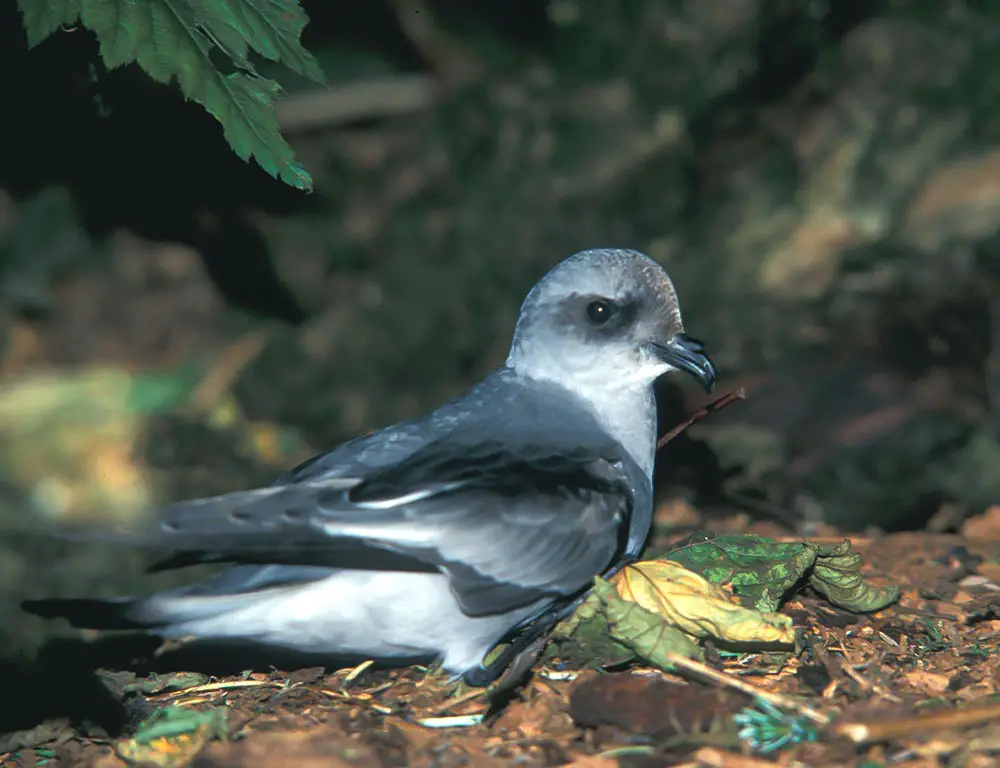
Northern storm petrels are one of the smallest seabirds, inhabiting oceans worldwide.
They can hover over water and pick planktonic crustaceans and small fish from the surface.
Northern storm petrels belong to the genus Hydrobates in the family Hydrobatidae, part of the Procellariiformes order.
This species was once lumped with austral storm petrel, but recent studies show that they weren’t closely related, leading to them being split into two distinct species.
These birds can be identified by their dark grey upperparts and wings along with white underparts when seen from afar while feeding on the ocean’s surface.
Scientific classification:
| Kingdom | Animalia |
| Phylum | Chordata |
| Class | Aves |
| Order | Procellariiformes |
| Family | Hydrobatidae Mathews, 1912 |
| Genus | Hydrobates F. Boie, 1822 |
Also Featured In: Birds of Sweden, Lebanon Birds Live in Semi-Desert Areas
4. Wilson’s Storm Petrel
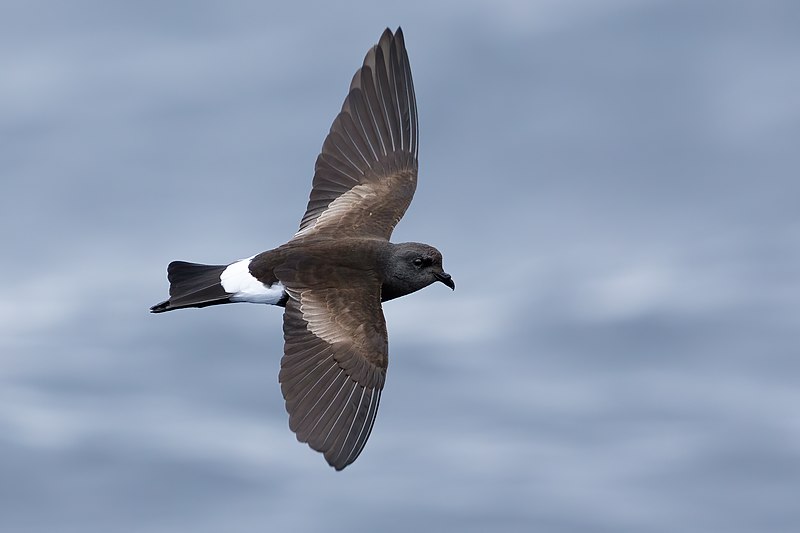
Wilson’s storm petrel is a small seabird of the Oceanitidae family. A circumpolar species, it can be found in both the northern and southern hemispheres during summertime.
Its abundance population is estimated to be around 20 million birds as of 2022, making it one of Earth’s most populous bird species.
This nocturnal creature loves to feed on crustaceans, fish eggs, and larval fishes that they catch while flying over open waters near coasts or islands at night.
During daylight hours, Wilson’s Storm Petrel will rest in large groups and form colonies with fellow members for protection against predators like gulls and skuas, which steal their food supplies if given the opportunity.
Scientific classification:
| Kingdom | Animalia |
| Phylum | Chordata |
| Class | Aves |
| Order | Procellariiformes |
| Family | Oceanitidae |
| Genus | Oceanites |
| Species | O. oceanicus |
Also Featured In: Dominican Republic birds, Birds Live in Tunisia
5. European Storm Petrel
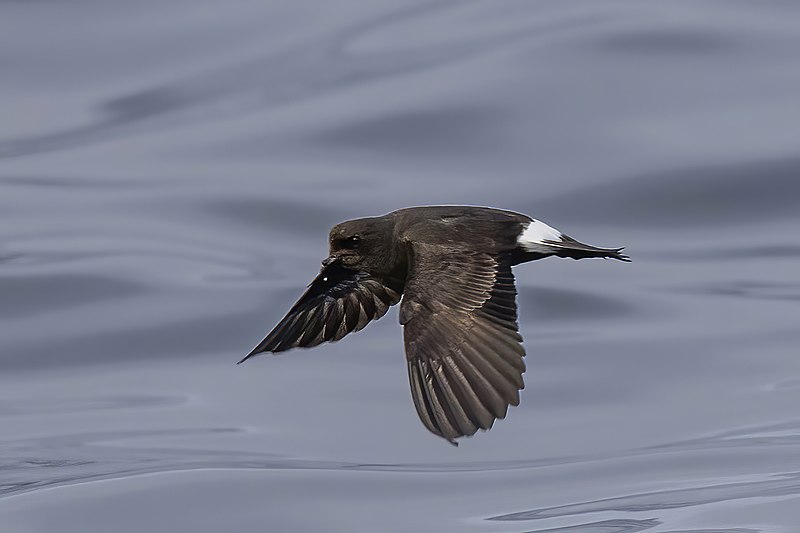
The European Storm Petrel is a small black seabird with a white rump and wings. It has an unusual, bat-like flight which flutters across the sky.
Its population mainly breeds on islands off the coasts of Europe but can also be found in parts of North America, Japan, and Korea.
They feed on planktonic crustaceans such as copepods by ‘pattering’ over water surfaces or dip-feeding, where they plunge into the sea to catch their prey before flying away again.
These birds are elusive yet social when breeding; during this time, they form colonies often near cliffs for protection from predators and harsh conditions at sea.
Scientific classification:
| Kingdom | Animalia |
| Phylum | Chordata |
| Class | Aves |
| Order | Procellariiformes |
| Family | Hydrobatidae |
| Genus | Hydrobates |
| Species | H. pelagicus |
Also Featured In: Ireland Birds, Turkey Birds You Should Know
6. Albatrosses
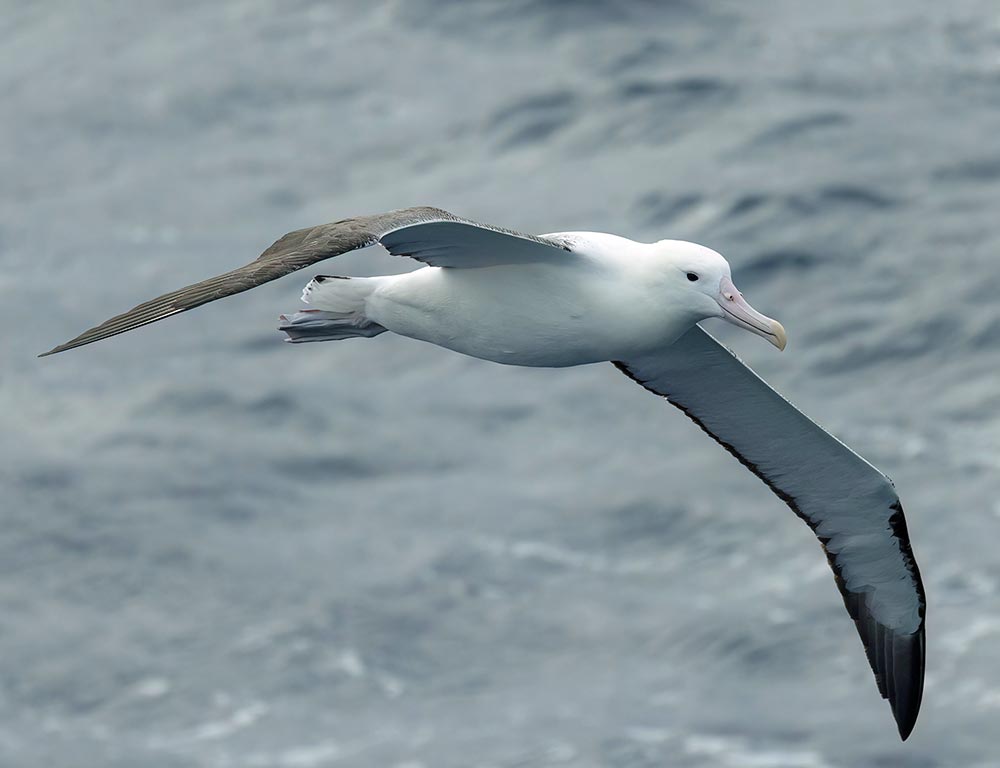
Albatrosses are majestic, large seabirds belonging to the Diomedeidae family in the Procellariiformes order.
These birds have impressive wingspan and can fly far over oceans with minimal effort.
They inhabit all of the world’s southern oceans, ranging from Antarctica to New Zealand and Australia and parts of the northern Pacific Ocean region.
Albatross populations were once abundant throughout much of their range, but they now face threats such as longline fishing gear entanglement, which has caused a significant decline in numbers in some areas.
Furthermore, occasional vagrants have been found outside their native ranges including fossil remains suggesting that albatrosses previously existed on other regions too.
Scientific classification:
| Kingdom | Animalia |
| Phylum | Chordata |
| Class | Aves |
| Order | Procellariiformes |
| Family | Diomedeidae G.R. Gray 1840[1] |
Also Featured In: New Zealand Birds, Birds that Live in the Ocean
7. Streaked Shearwater
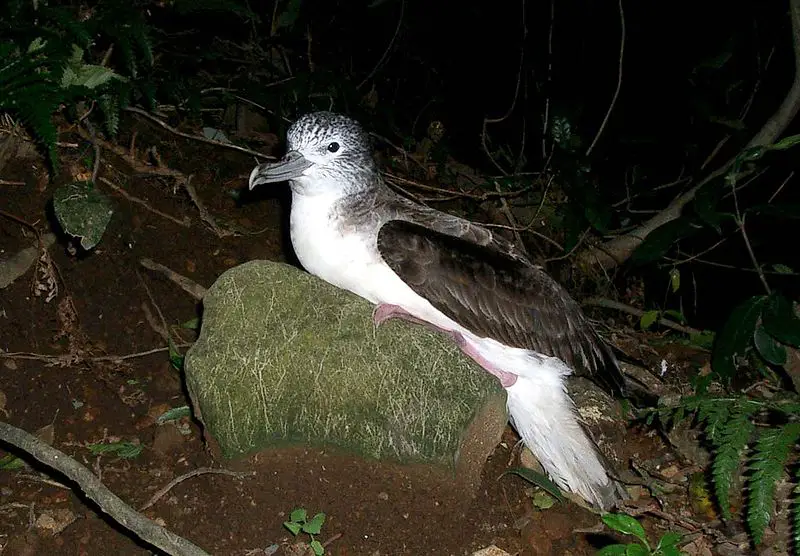
The Streaked Shearwater is a species of seabird that averages 48 cm in length and has a wingspan of 122 cm. It primarily feeds on fish, squid, and anchovy crawls off Japan.
Sadly, it can often be taken as by-catch in nets or die from ingesting bait from longline fishing lines. This bird may also follow fishing boats to scavenge for food scraps thrown overboard.
Despite its vulnerability to human activity, the Streaked Shearwater’s population numbers have remained stable due to its wide range across many oceanic regions, such as the North Pacific Ocean and the South China Sea.
Scientific classification:
| Kingdom | Animalia |
| Phylum | Chordata |
| Class | Aves |
| Order | Procellariiformes |
| Family | Procellariidae |
| Genus | Calonectris |
| Species | C. leucomelas |
Also Featured In: Palau birds, Native Birds Of Kuchinoerabu Island
8. Golden-Winged Warbler
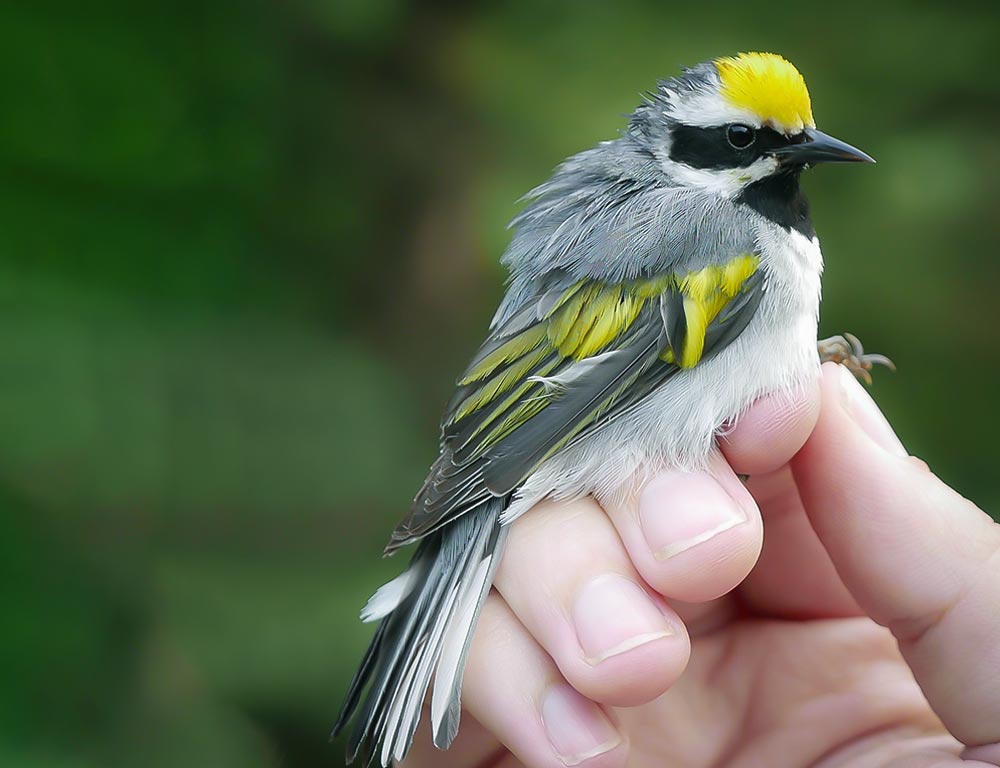
The golden-winged warbler is a beautiful bird found in southeastern and south-central Canada and the Appalachian Mountains of the United States.
It is most abundant in Wisconsin, Minnesota, and Manitoba, where around 70% of its global population resides.
Unfortunately, despite expanding northwards, their numbers are declining overall due to habitat loss from development and farming practices.
This species nests on the ground amongst dense vegetation such as shrubs or grasses near wetlands, but they feed high up in forest canopy trees, which makes them difficult to spot with binoculars.
Their plumage consists of greyish wings, a back with yellow face markings, and a white breast with speckled black flecks across it, making for quite an impressive sight when seen at close range.
Scientific classification:
| Kingdom | Animalia |
| Phylum | Chordata |
| Class | Aves |
| Order | Passeriformes |
| Family | Parulidae |
| Genus | Vermivora |
| Species | V. chrysoptera |
Also Featured In: Gold Birds, Birds Commonly Found in New York
9. Pallid Cuckoo
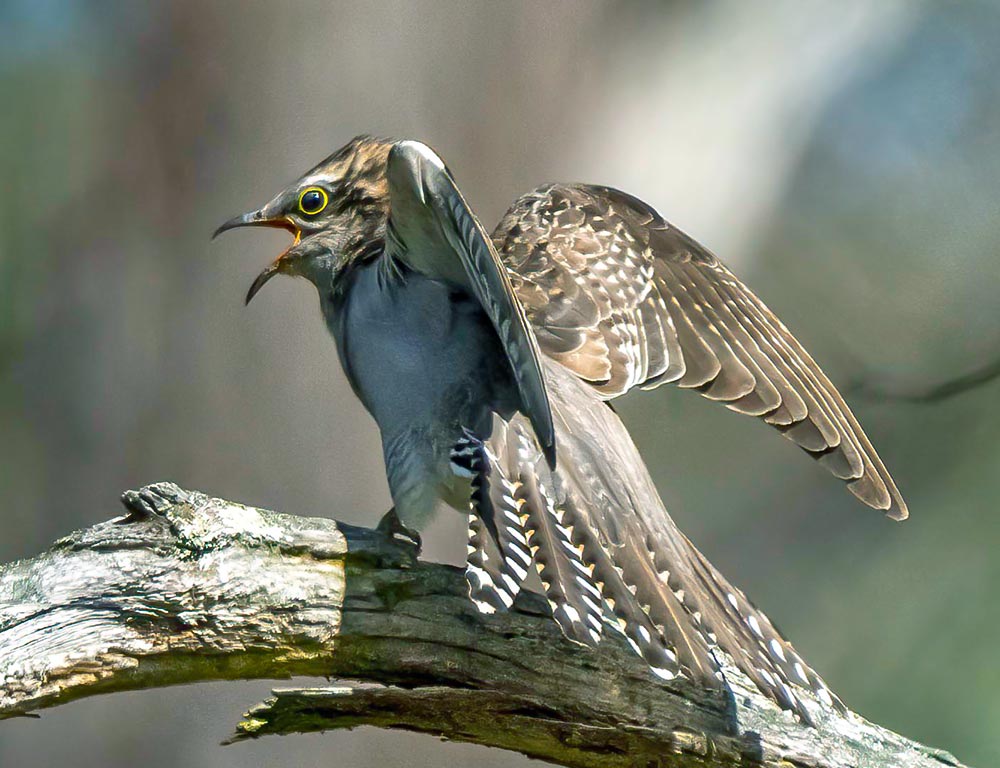
The Pallid cuckoo is known for its distinct dark bill, olive-grey feet, and dark eyes with a gold eye-ring.
It belongs to the cuckoo family and is found in Australia, occasionally migrating to nearby islands.
This bird species measures between 28 and 33 cm in size. It is easily distinguishable from other cuckoos due to its unique markings.
Despite being similar in appearance, the Pallid cuckoo is not related to the European Cuckoo.
It is a brownish-grey bird that flies quickly through the trees and feeds on insects, spiders, and caterpillars.
The Pallid cuckoo is a bird that often becomes a brood parasite, meaning it lays its eggs in other birds’ nests, leaving the host birds to raise their young.
Scientific classification:
| Kingdom | Animalia |
| Phylum | Chordata |
| Class | Aves |
| Order | Cuculiformes |
| Family | Cuculidae |
| Genus | Cacomantis |
| Species | C. pallidus |
Also Featured In: Common Townsville Birds,
Conclusion
The remarkable resilience of the nine bird species capable of surviving in storms is a testament to their evolutionary adaptability and survival strategies.
Our exploration into their behaviors, physical adaptations, and habitat choices during adverse weather conditions has shed light on their extraordinary abilities.
Whether it’s the seabirds that ride the tempestuous waves or the raptors that navigate fierce winds, these avian survivors exemplify nature’s ability to overcome adversity.
Studying and understanding their tactics for weathering storms not only deepens our appreciation for their tenacity but also underscores the importance of preserving their habitats and ecosystems.
These birds remind us of life’s remarkable adaptability and fortitude in the natural world.